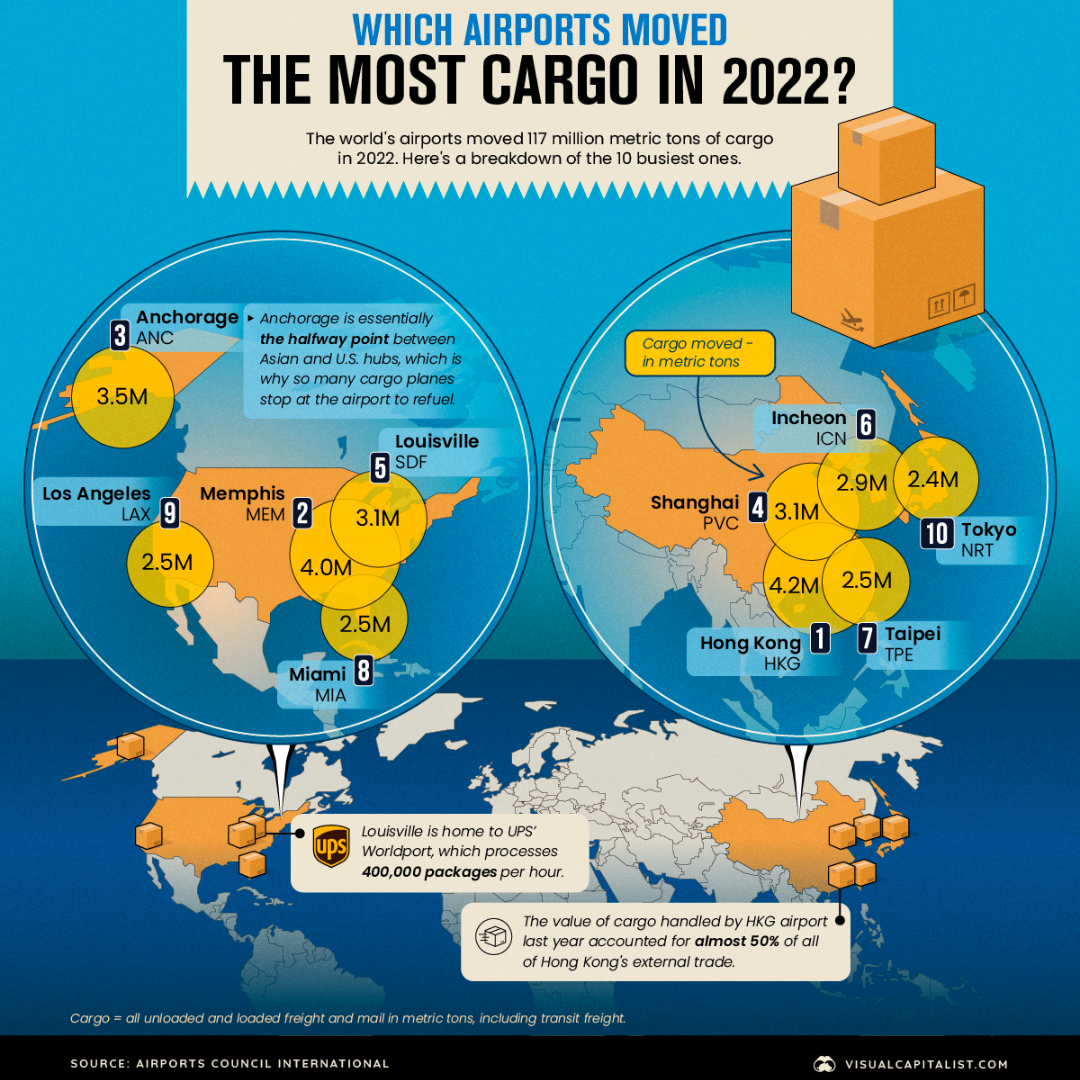The Numbers Behind Air Cargo

Take to the Skies with these High Flying Statistics
When it comes to freight forwarding, most people picture thousands of shipping containers stacked on top of each other on massive cargo ships or parading past on a miles long train. However, less attention is paid to air cargo constantly criss-crossing the globe.
While out of sight may mean out of mind, approximately 35% of world trade travels through airports, or about $6 trillion dollars annually. From the busiest airport in the world—Hong Kong, 28 years and counting—all the way to FedEx processing 245,000 documents every hour in Memphis, the numbers are sky high.
How Much Cargo is Transported by Air?
The last four years have been a bumpy ride for air cargo. Following the onset of the Covid-19 pandemic, total revenue peaked at $204 billion in 2021. That was nearly twice the total tallied in 2019. Rising inflation has hampered the meteoric rise. The market contracted slightly by $13 billion, yet still hit the second best year ever, in 2022.
It’s worth noting that, despite the increase in revenues, volume is projected to end 2023 at 63.7 million cargo ton kilometers—5.5% below 2019 levels. Cargo ton kilometers, known as CTK, is an industry standard statistic found by multiplying the cargo’s weight by total distance traveled.
So what exactly is taking up all this volume?
Air cargo is split up into two categories: general cargo and special cargo.
General cargo refers to most consumer goods, such as dry goods, hardware, and textiles. Electronics like mobile phones, tablets, and laptops are a notable exception to general cargo.
Special cargo will require specific documentation and handling during transport. This category includes live animals, wet cargo, perishable cargo, time and temperature sensitive products, like pharmaceuticals, and dangerous goods. Dangerous goods refers to explosives, gasses, flammable liquids, and more. Some substances cannot be transported via air, while others cannot be flown in planes with any other goods.


What Are the Busiest Airports in the World?
As previously mentioned, Hong Kong is the busiest airport in the world. Four of the top ten are located in China and one, Tokyo, is in Japan. Hong Kong welcomed 71.4 million passengers in 2019, making it the 13th busiest passenger airport in the world. It has not cracked the top 50 since then, due in no small part to China’s zero-Covid policy. Despite this, Hong Kong retains its number one spot for cargo and has an ultimate capacity of 7.4 million tons.
The other five are in the United States. It might be surprising to learn that the busiest airports in the United States are Louisville, Memphis, and Anchorage. 4.2 million passengers landed in Louisville during 2019—but compare that to the 3.2 billion tons of cargo, freight, and mail during the same time period. Take it one step further with Memphis weighing 4.7 million tons, thanks to FedEx’s spoke-and-hub system.
What Does the Future Hold for Air Cargo?
After reaching stratospheric numbers for air cargo in 2021, demand has fallen in 2022 and 2023. This consecutive year-over-year loss is due to practically every country using all the tools at their disposal to combat inflation.
“It will, however, take time for these measures to bite into cargo rates,” said Willie Walsh, the director of the International Air Transport Association. “The good news for air cargo is that average yields and total revenue for 2023 should remain well above what they were pre-pandemic.”
The speed and immediacy of air cargo leaves it just as, if not more, susceptible to consumer spending habits than ocean shipping. As economies recover over the next several years and demand increases, there is no doubt that volume and revenue will follow suit. It would not be a surprise at all if new records continue to be set each year by the end of the decade.
SiShips Gives You the Advantage
SiShips combines expertise with state of the art software to bring you high quality domestic and international shipping solutions. We put the shipper in control, offering efficient and cost effective ways to ship your product.
To learn more about managed transportation with SiShips or to view a demo of our software, contact us today.

